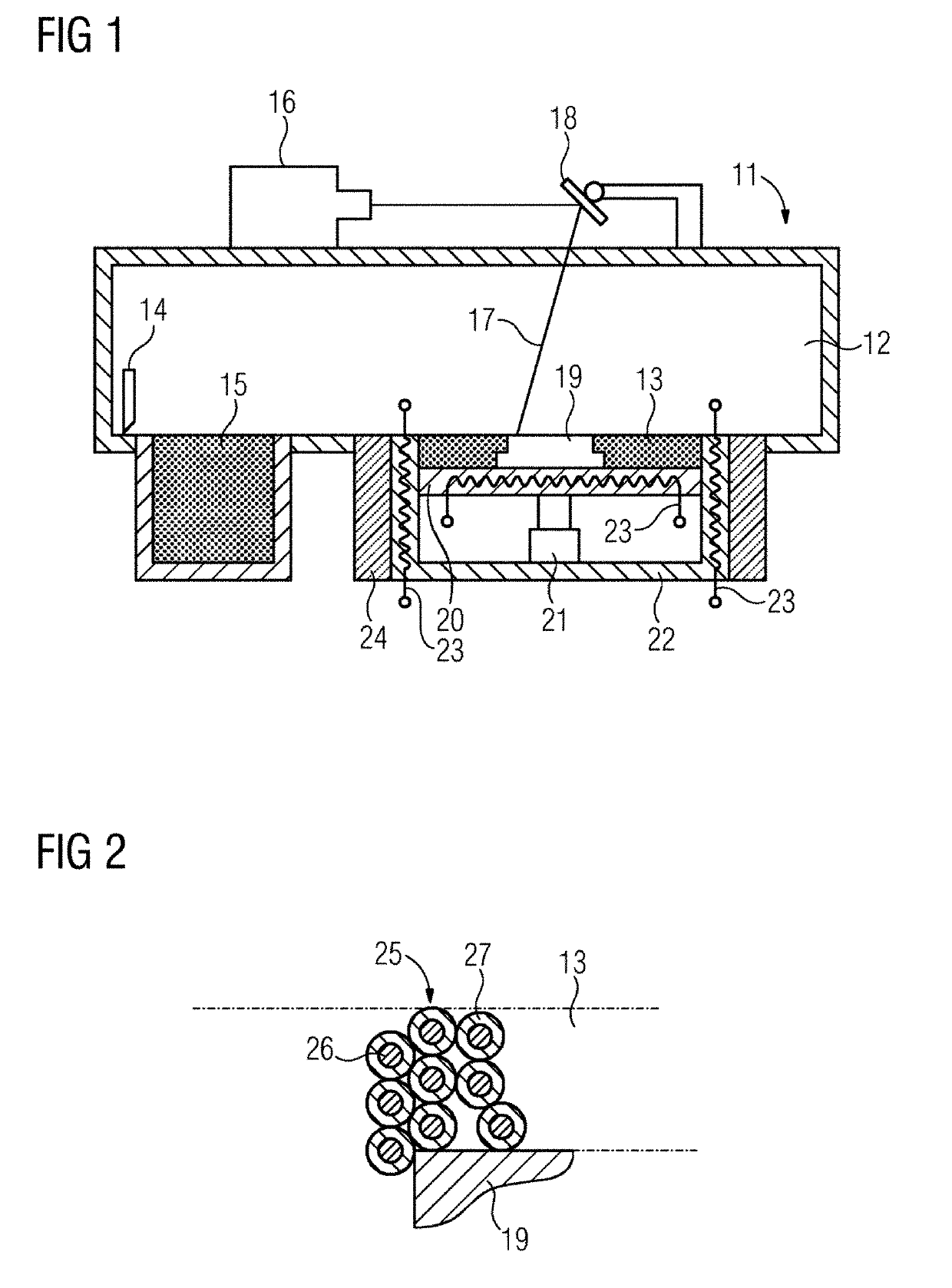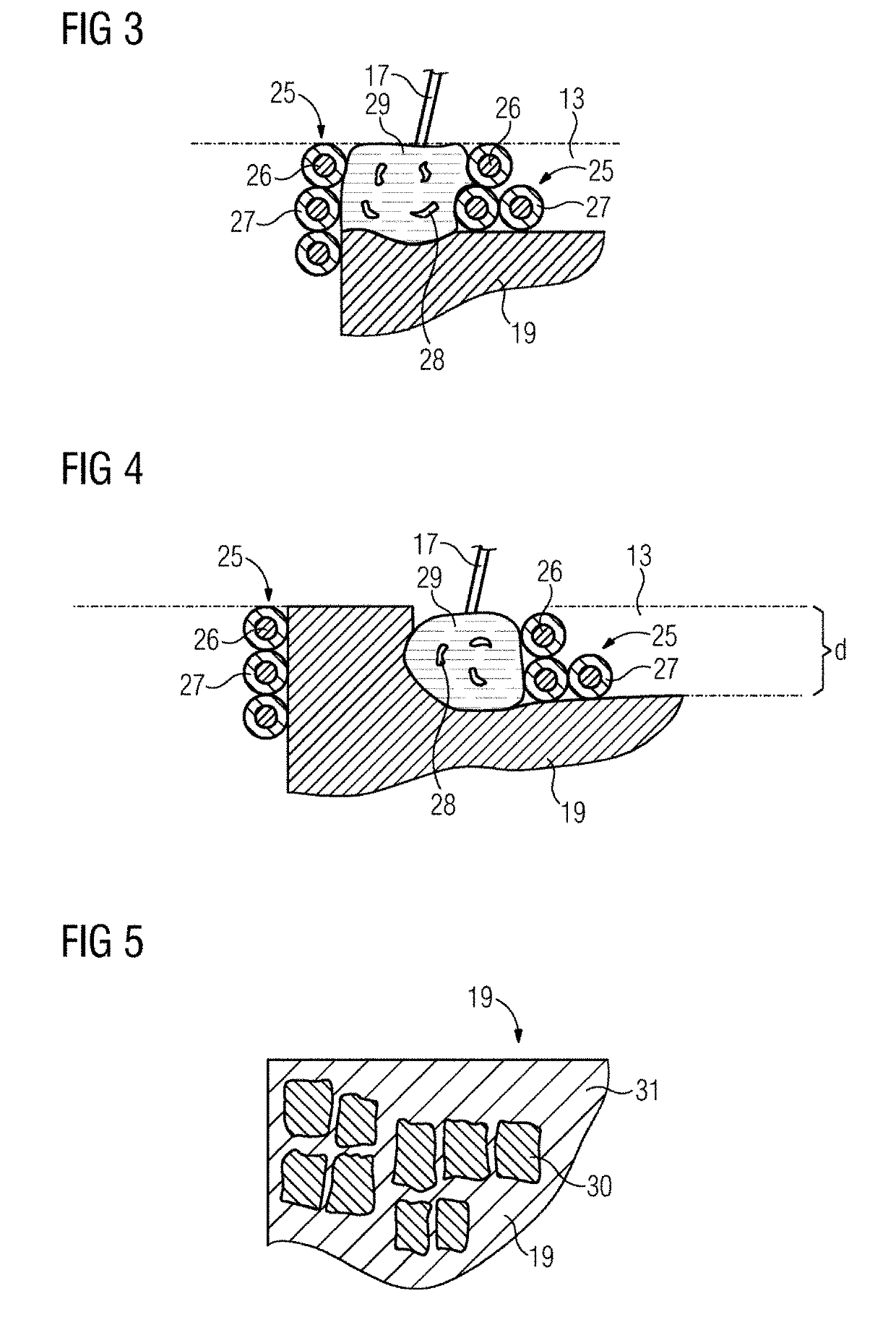Method for generating a component by a power-bed-based additive manufacturing method and powder for use in such a method
- Summary
- Abstract
- Description
- Claims
- Application Information
AI Technical Summary
Benefits of technology
Problems solved by technology
Method used
Image
Examples
Embodiment Construction
[0026]Represented schematically in FIG. 1 is a unit 11 for laser melting. This unit has a process chamber 12 in which a powder bed 13 may be produced. To produce, respectively, one layer of a powder bed 13, a spreader in the form of a doctor blade 14 moves over a powder store 15 and subsequently over the powder bed 13, so forming a thin layer of powder in the powder bed 13. A laser 16 then generates a laser beam 17, which is moved by an optical deflection apparatus with mirror 18 over the surface of the powder bed 13. At the point of impingement of the laser beam 17, the powder is melted, to form a component 19.
[0027]The powder bed 13 comes about on a building platform 20, which may be lowered step by step, by the thickness of one powder layer in each case, in a pot-shaped housing 22 by an actuator 21. In the housing 22 and also in the building platform 20, heating devices 23 are provided in the form of electrical resistance heaters (induction coils are an alternative option), which...
PUM
| Property | Measurement | Unit |
|---|---|---|
| Temperature | aaaaa | aaaaa |
| Temperature | aaaaa | aaaaa |
| Temperature | aaaaa | aaaaa |
Abstract
Description
Claims
Application Information
 Login to View More
Login to View More - R&D
- Intellectual Property
- Life Sciences
- Materials
- Tech Scout
- Unparalleled Data Quality
- Higher Quality Content
- 60% Fewer Hallucinations
Browse by: Latest US Patents, China's latest patents, Technical Efficacy Thesaurus, Application Domain, Technology Topic, Popular Technical Reports.
© 2025 PatSnap. All rights reserved.Legal|Privacy policy|Modern Slavery Act Transparency Statement|Sitemap|About US| Contact US: help@patsnap.com


